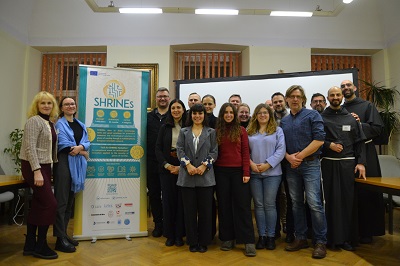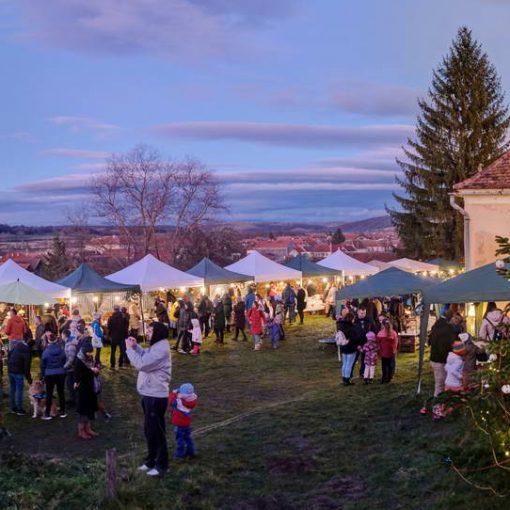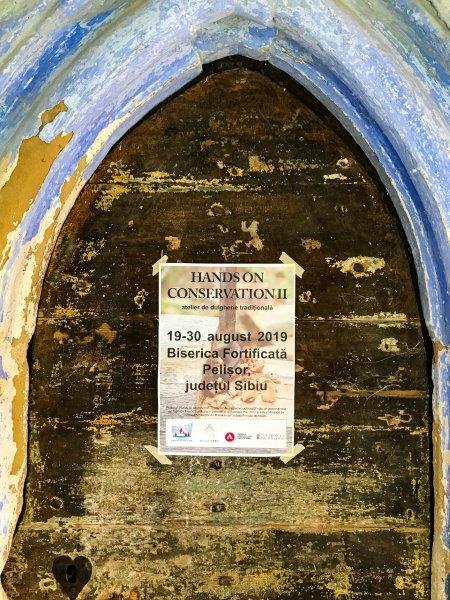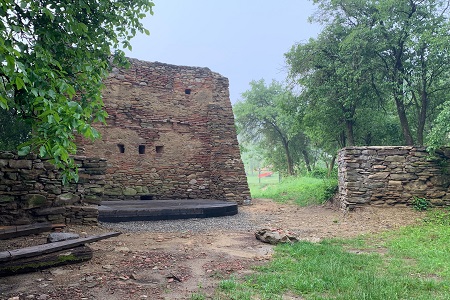Innovation and cooperation for the protection of places of worship
For over two years, the Fortified Churches Foundation participated in the SHRINEs project funded by the European Union to work on deepening international cooperation for the protection of religious heritage sites. A major conference in the form of a hackathon in Italy and the closing event in Sibiu marked the finale of this project.
From 25 to 27 November 2024, the SHRINEs conference took place in the historic city of Assisi in Umbria (Italy). The initiative, co-funded by the EU and the ISF programme, brought together over 150 participants from science, technology and practice. The aim of the hackathon was to develop innovative solutions for the protection of religious and cultural sites. Sebastian Bethge, heritage protection officer at the Fortified Churches Foundation, and Ruth István, the project responsible from the side of the Fortified Churches Foundation, also took part.
Places of worship around the world are facing growing challenges – from natural disasters, minor damage to property and theft to human threats such as terrorist attacks. The conference provided a platform for interdisciplinary approaches to minimise risks while preserving the ethical and cultural value of the sites.
Workshops and key topics
Practical case studies were discussed in specialised panels on specific measures to prevent and combat threats. However, the conference also focussed on the conflicting priorities of ethics and technology. Issues relating to the compatibility of technological progress and cultural heritage were discussed. In the working groups, participants were able to exchange best practices and ideas with international experts. The SHRINEs conference in Umbria thus sent out a strong signal in favour of the protection of cultural heritage sites. The event was not only an opportunity for brainstorming, but also a platform for interdisciplinary exchange.
Closing event in Sibiu
On 22 and 23 January 2025, the main stakeholders of the SHRINEs programme met in Transylvania for the “Final Event”. The participants from Italy, Poland, France, Latvia and Romania took part in an excursion to the Hartibaciu Valley on the first day. The guests were able to familiarise themselves with three examples of ecclesiastical cultural heritage that face different challenges, using the fortified churches of Altana, Hosman and Marpod as examples.
Finally, the second day of the symposium was dominated by specialist presentations on topics directly related to the risks for the preservation of European cultural heritage in the near and medium-term future, with a focus on the situation of the fortified church landscape: Cosmin Ignat from the ASTRA Museum in Sibiu spoke about the prospects for fortified churches with regard to the challenges of maintenance and possible extensions of use, while Stefan Bichler (Holzmedia) analysed the risks for future external financing of monument preservation measures in Europe in the light of political trends.
Heritage conservationist Sebastian Bethge was able to summarise with satisfaction: “Thanks to the European funding and the committed cooperation between experts, local stakeholders and institutions, we were able to lay the foundations for strategies for the transfer of expertise in this area.” In any case, the participants would like to continue the exchange with the new partners and hope for a continuation of the programme on similar topics. Co-organiser Ruth István: “The successful collaborations and innovative approaches of this programme lay a solid foundation for future projects in the field of sacred monument preservation and strengthen the common European cultural heritage.”




